Abstract
The performance of pigeons trained to detect differences in the duration of stimuli was analysed using a matching model of signal detection. Two white stimuli, S1 and S2, differing in duration, were arranged with equal probability on the center key of a three-key chamber. S1 was systematically varied from 5 seconds to 25 seconds while S2 remained constant at 30 seconds. On completion of the center-key stimulus, a peck on the center key turned on the two red side keys. A left-key response was "correct" when S1 had been in effect on the center key and a right-key response was "correct" on S2 trials. A correct response produced a 3-second magazine light accompanied intermittently by food. Incorrect responses produced 3-second blackouts. Detection performance was measured under two procedures. In the first, the obtained reinforcement ratio was uncontrolled by allowing the number of food reinforcements obtained for correct left- and right-key responses to vary as the stimuli were changed. In the second procedure, the presentation of food reinforcement was controlled by holding the obtained reinforcement ratio constant. Discriminability changed as a function of stimulus differences under both procedures. No such trend was found in response bias.
Full text
PDF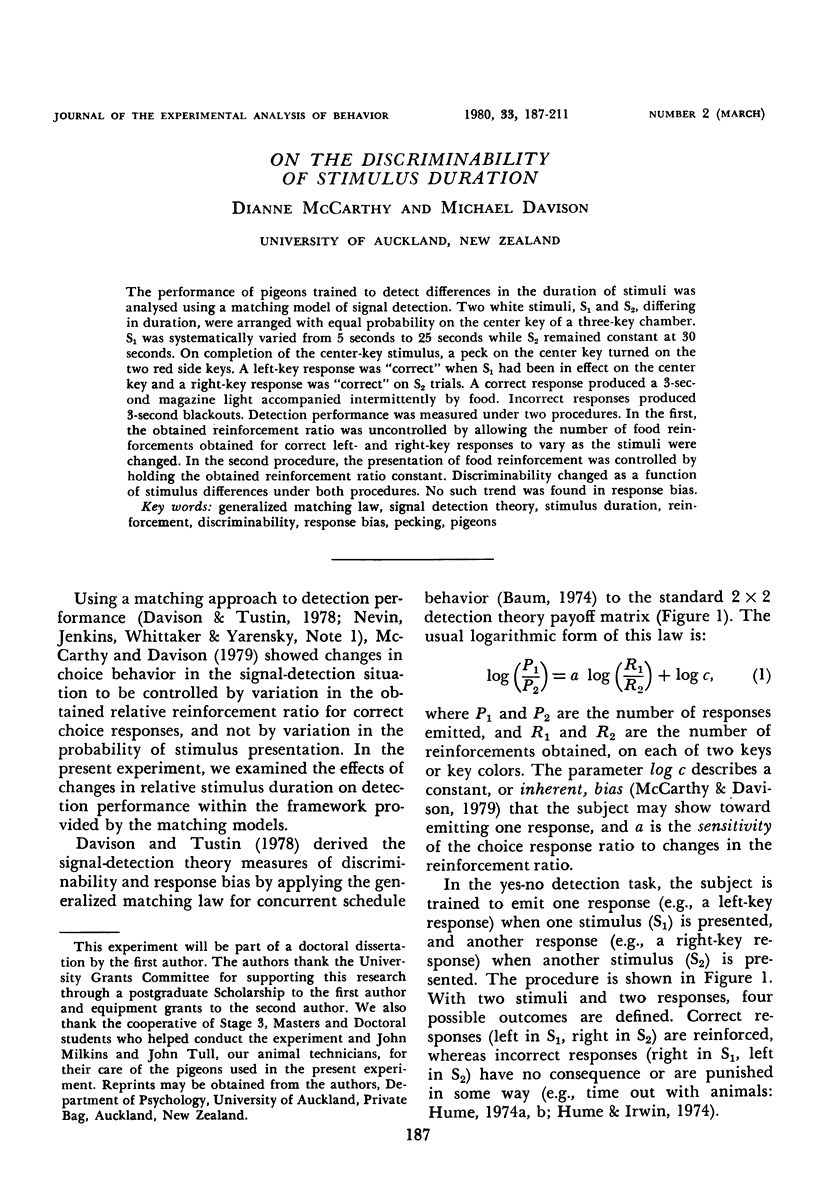
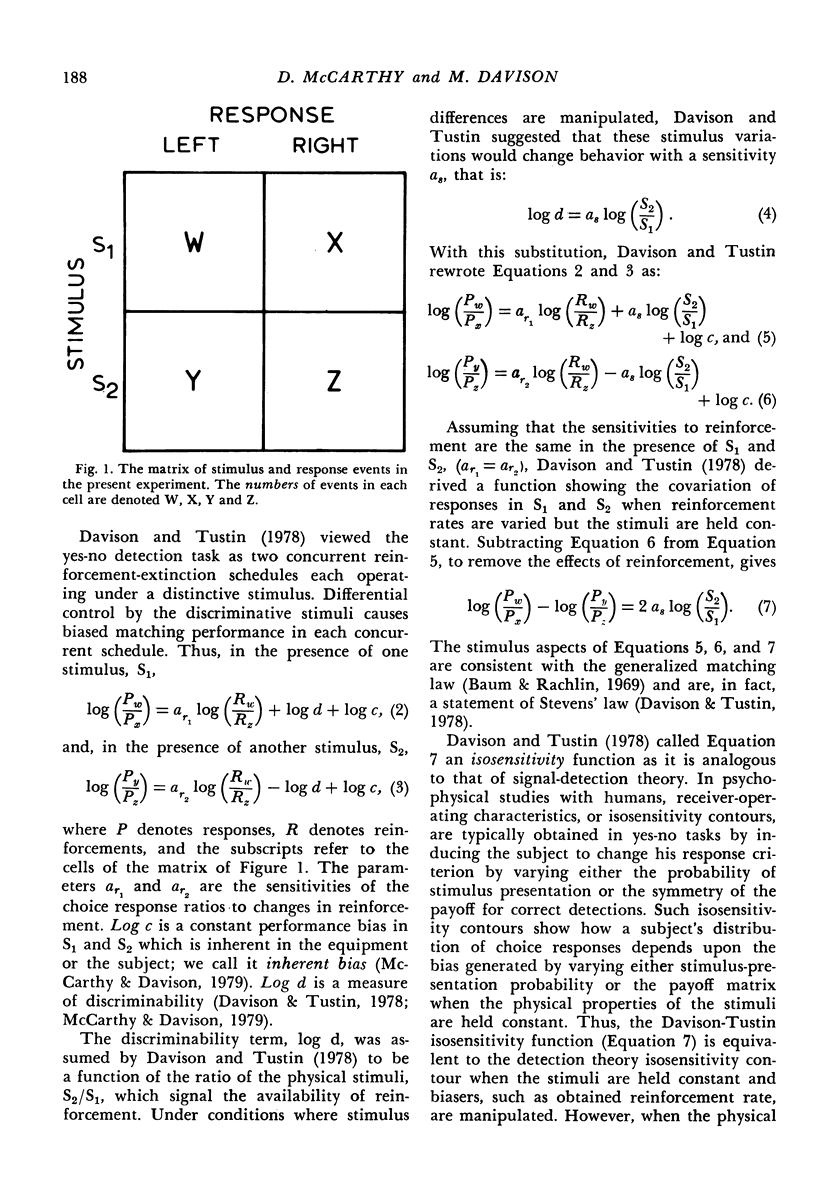
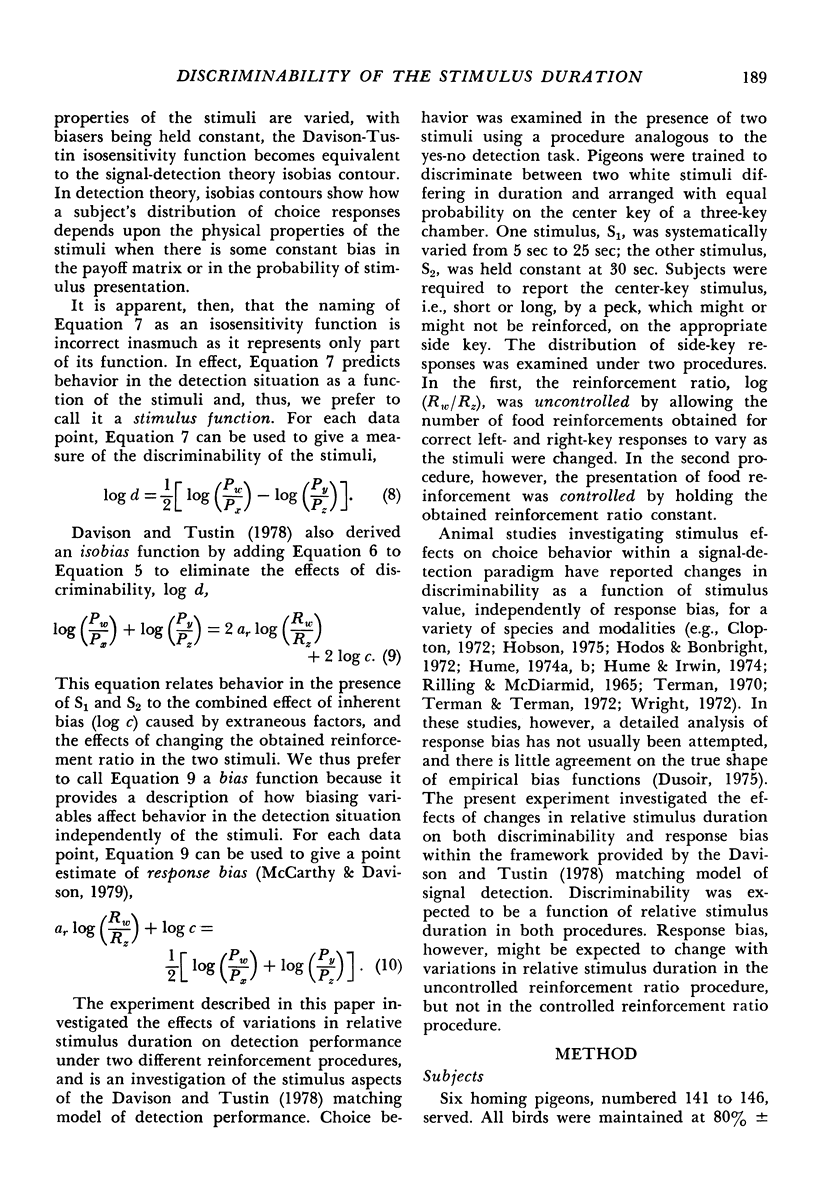
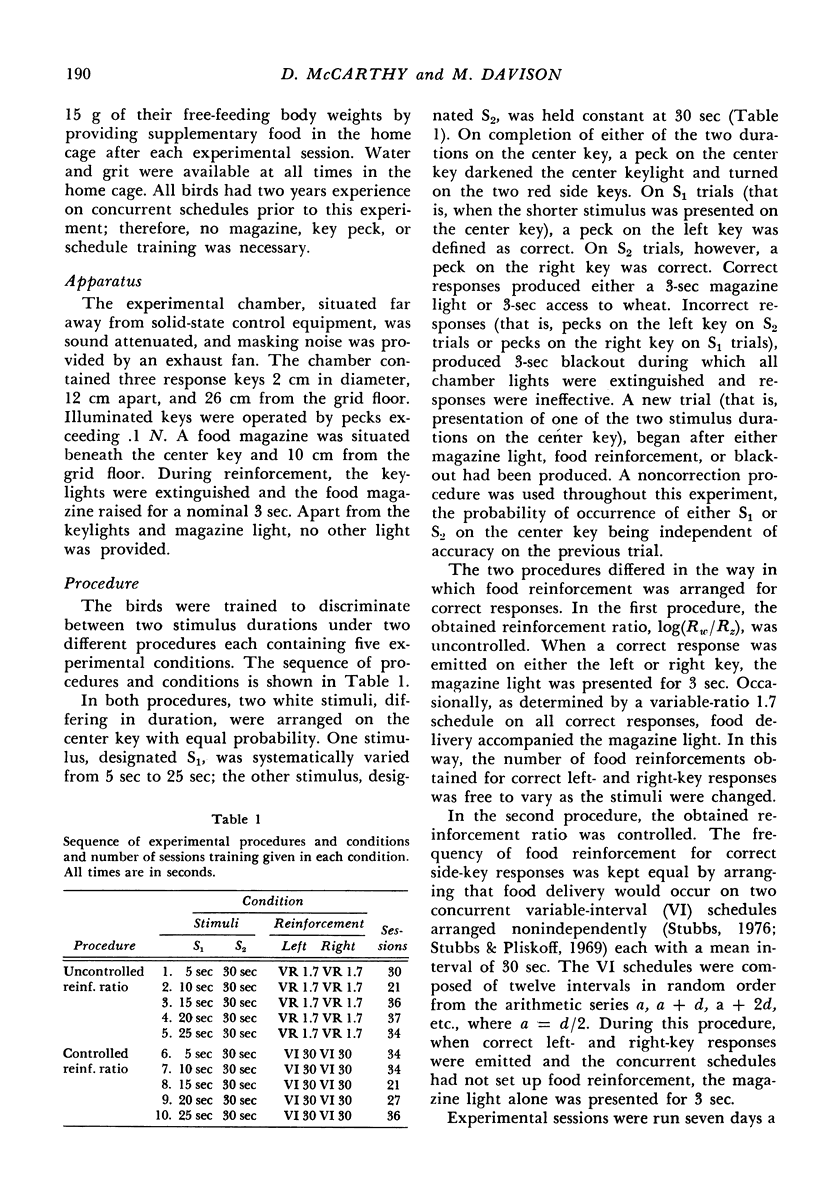
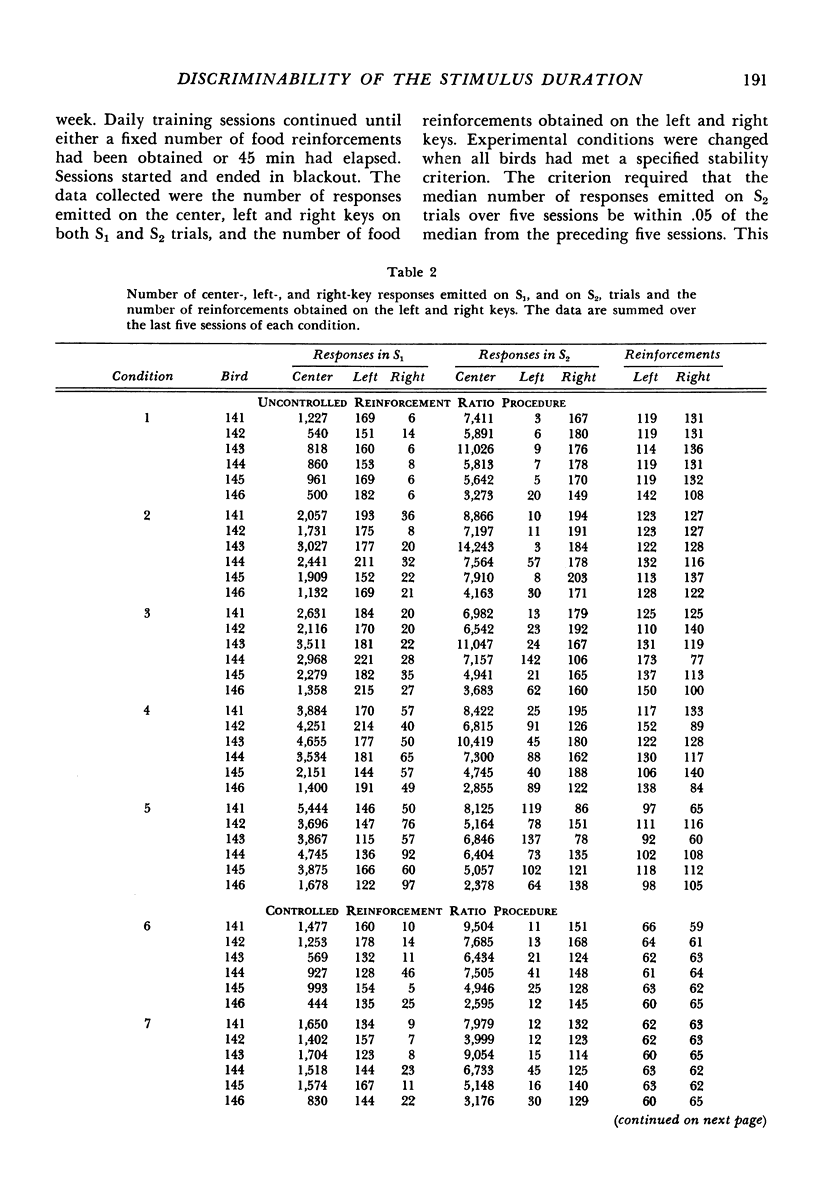
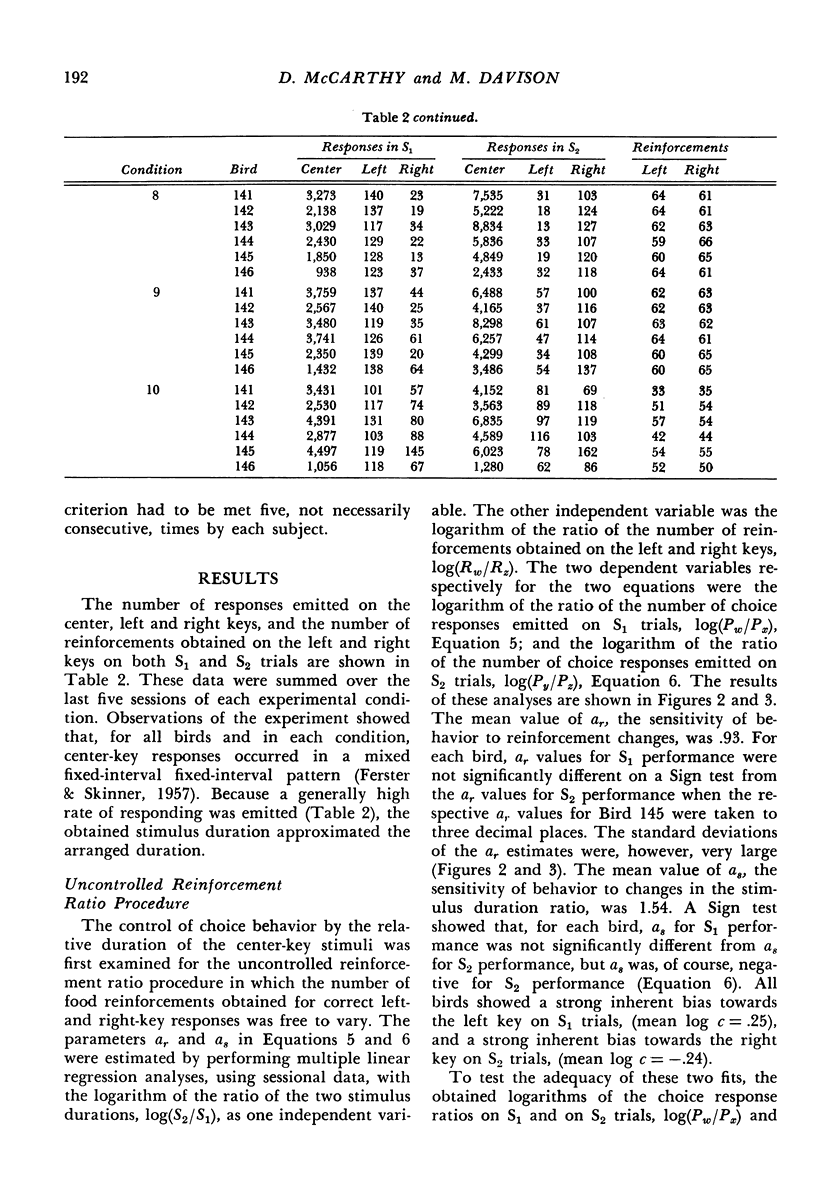
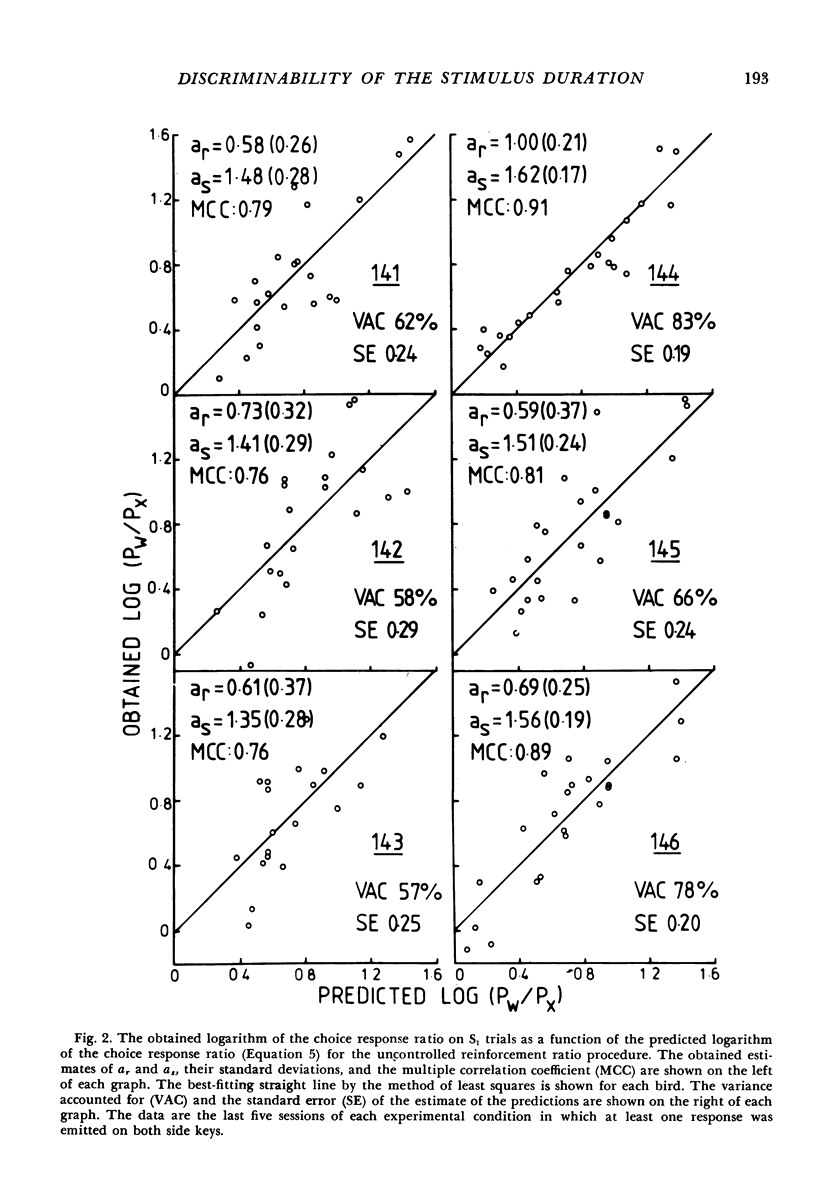
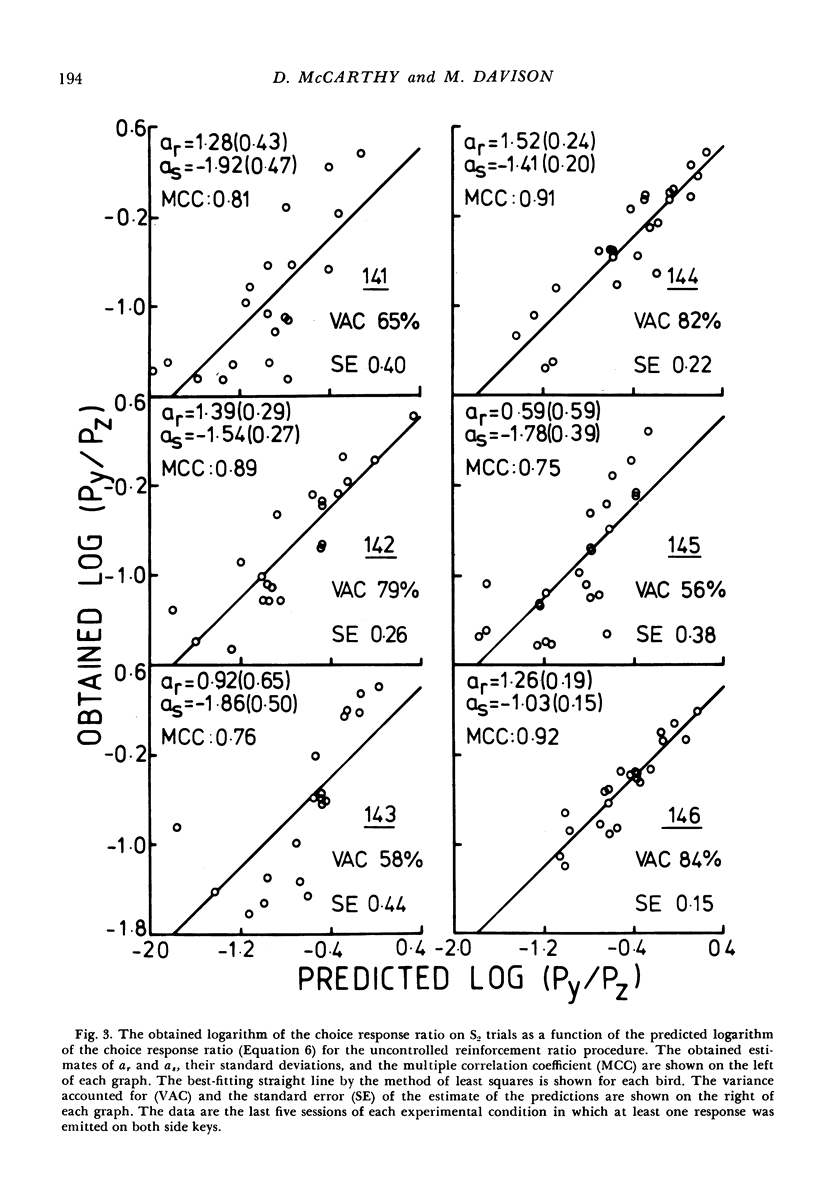
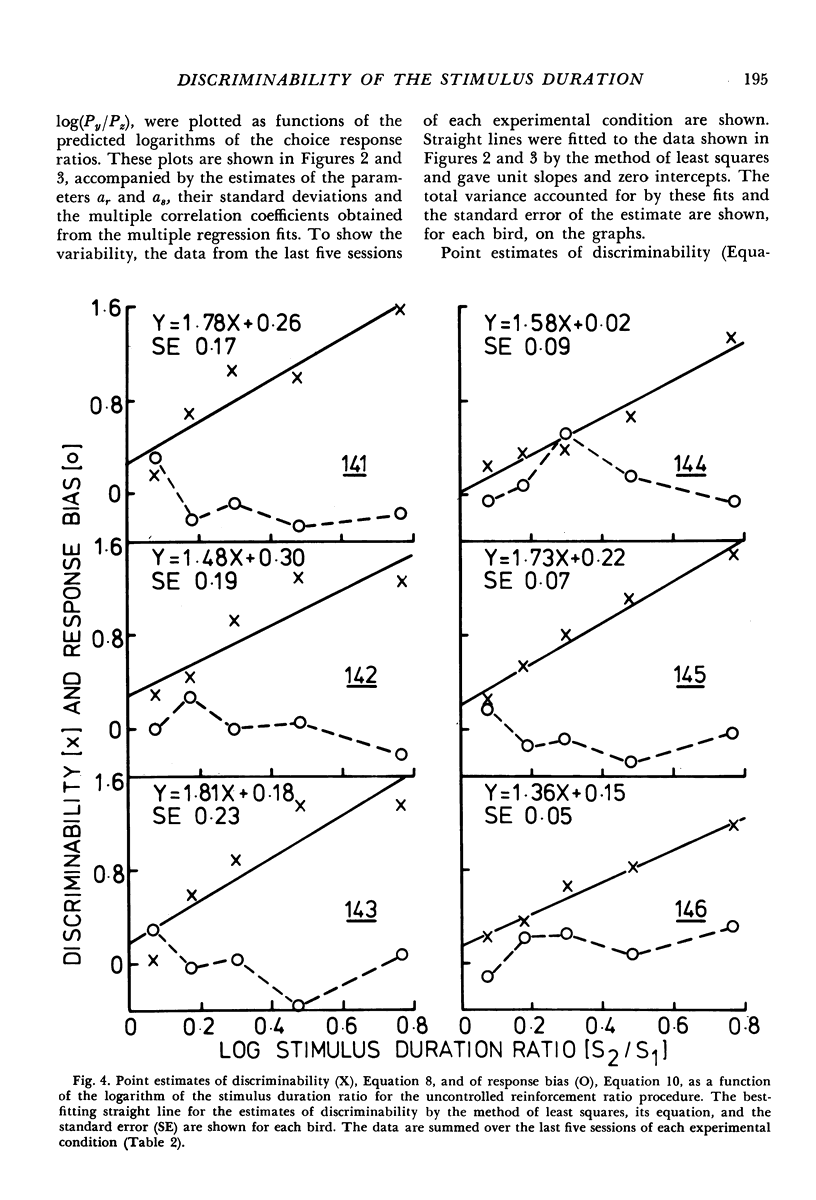
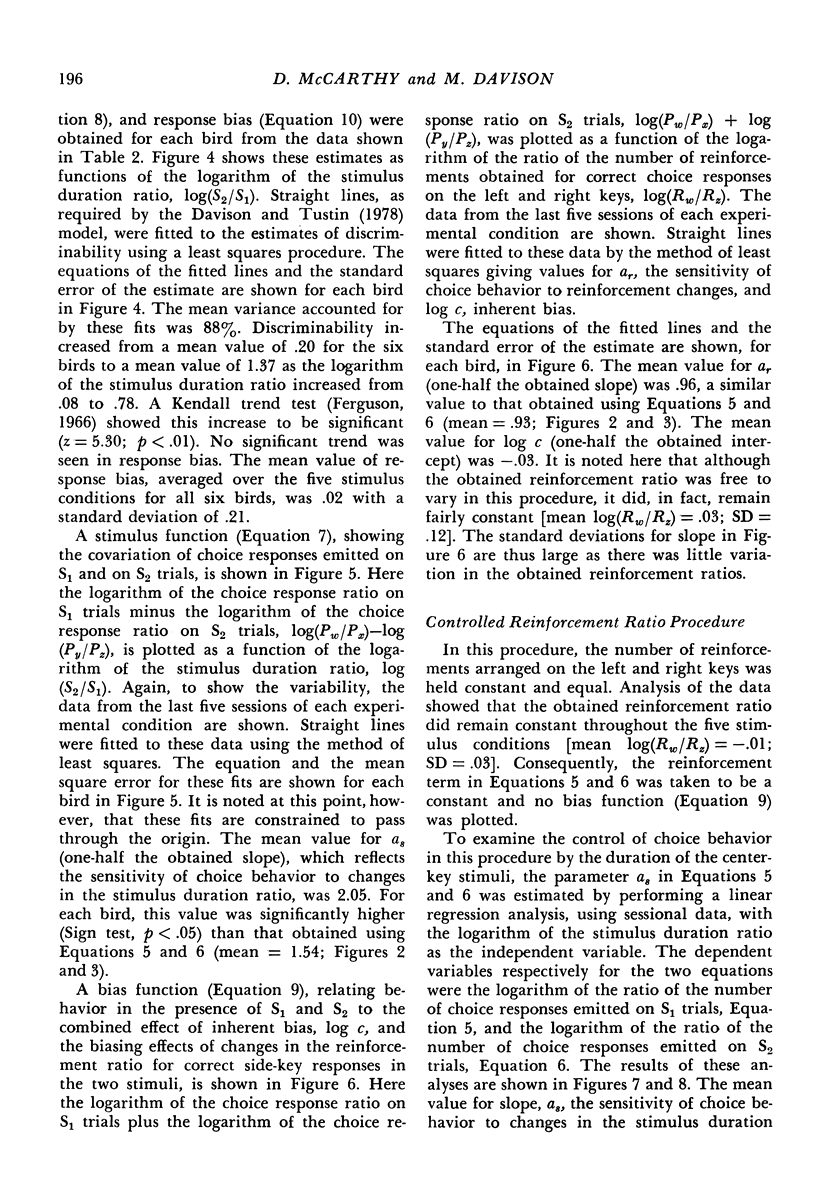
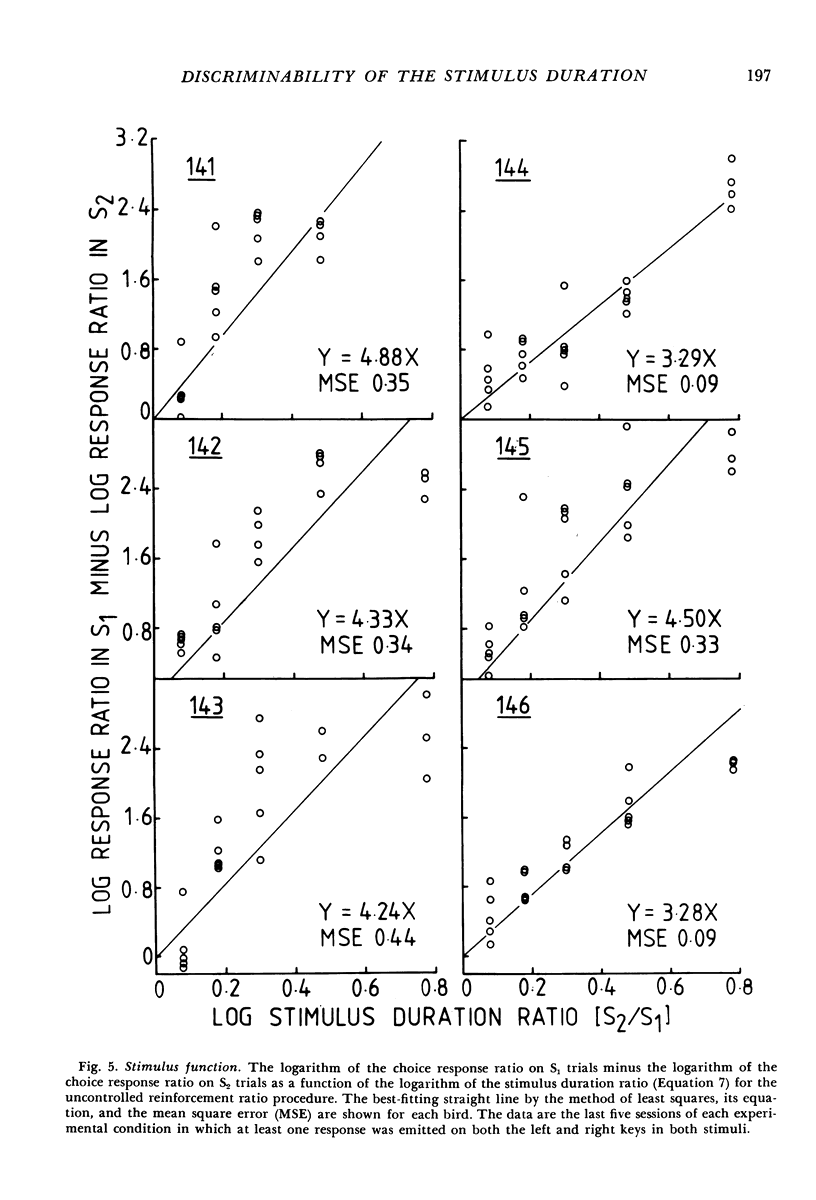
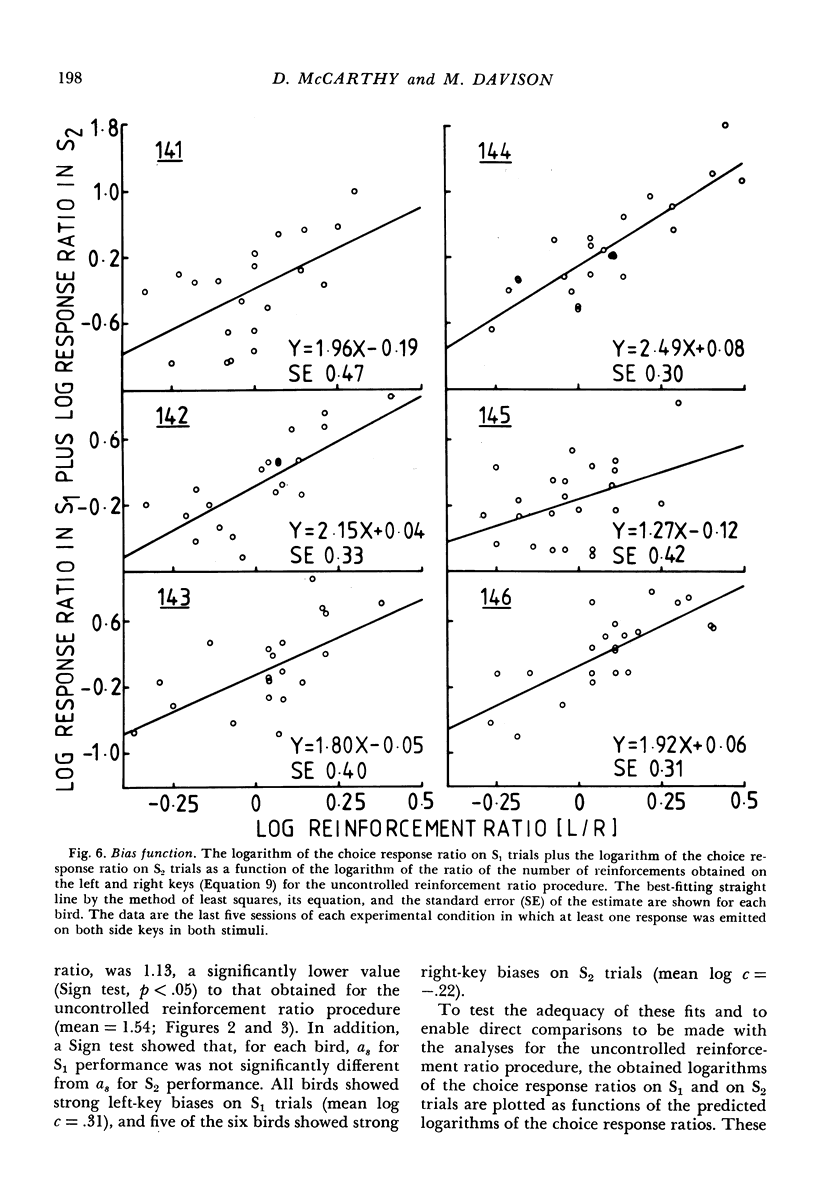
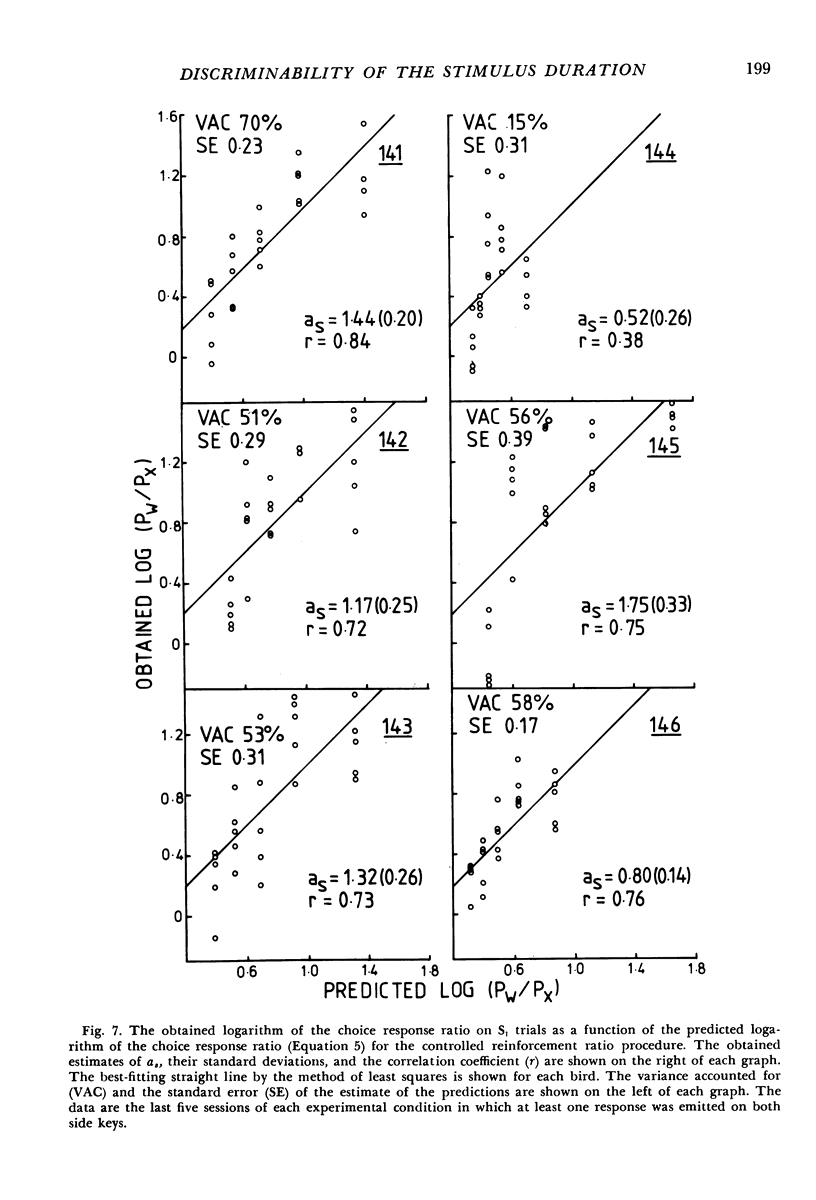
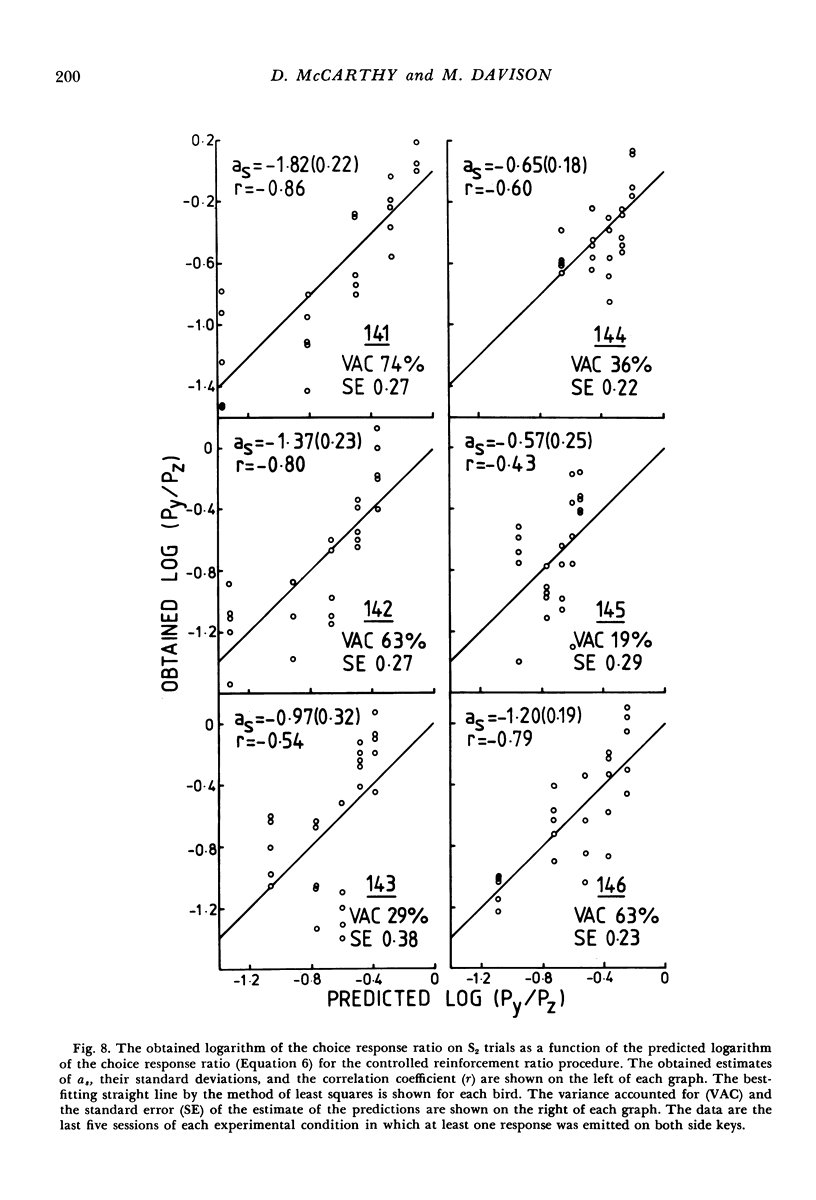
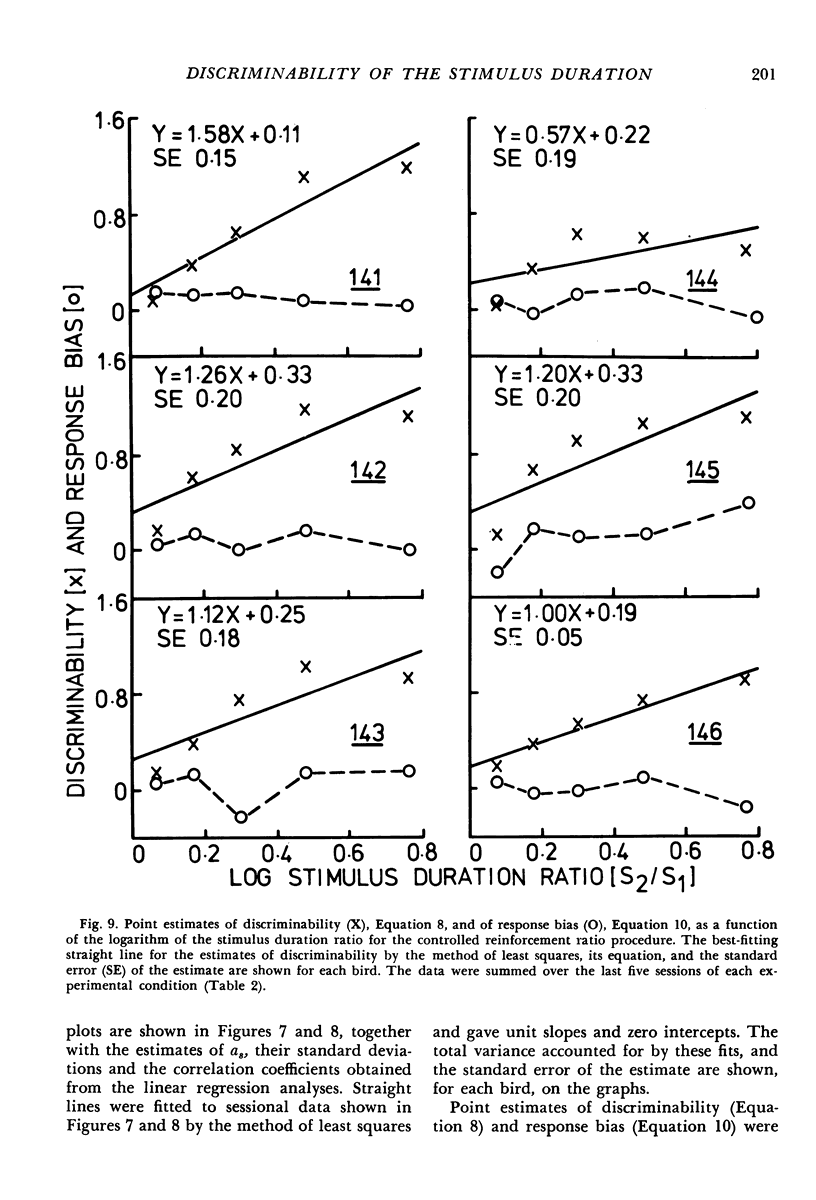
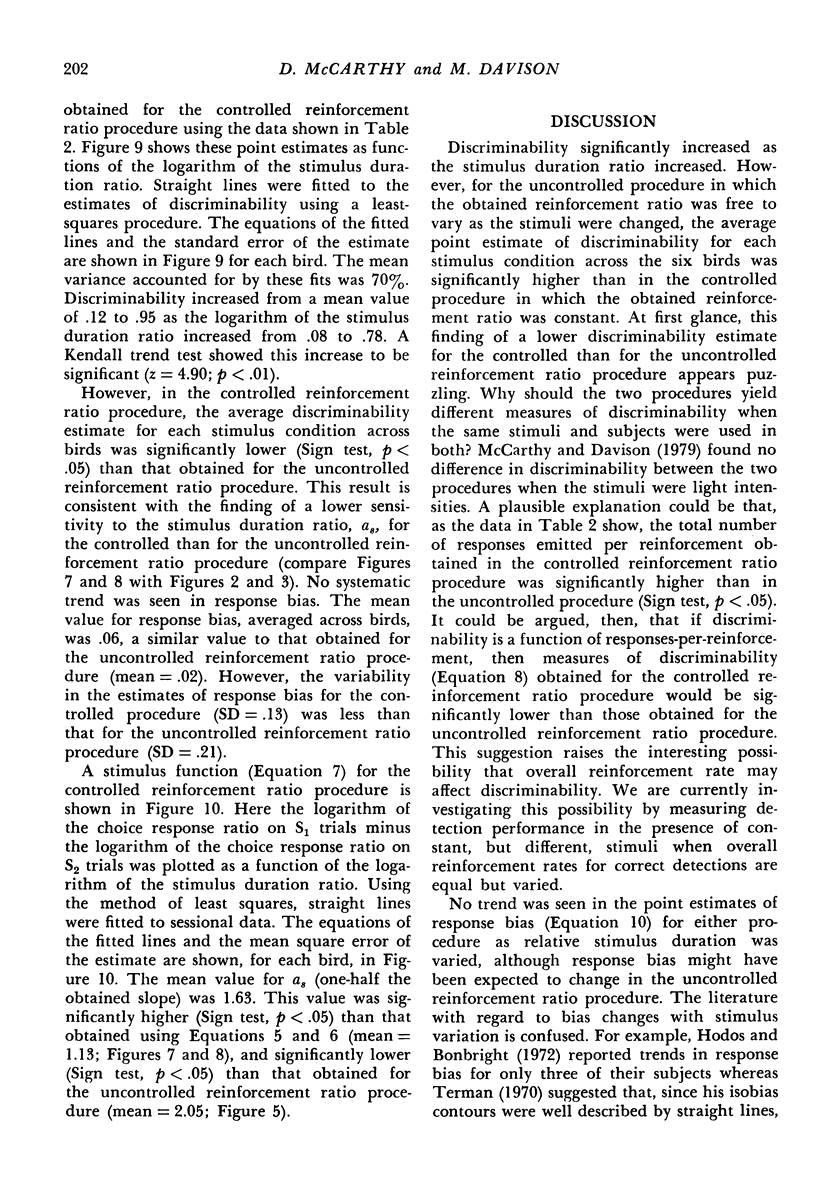
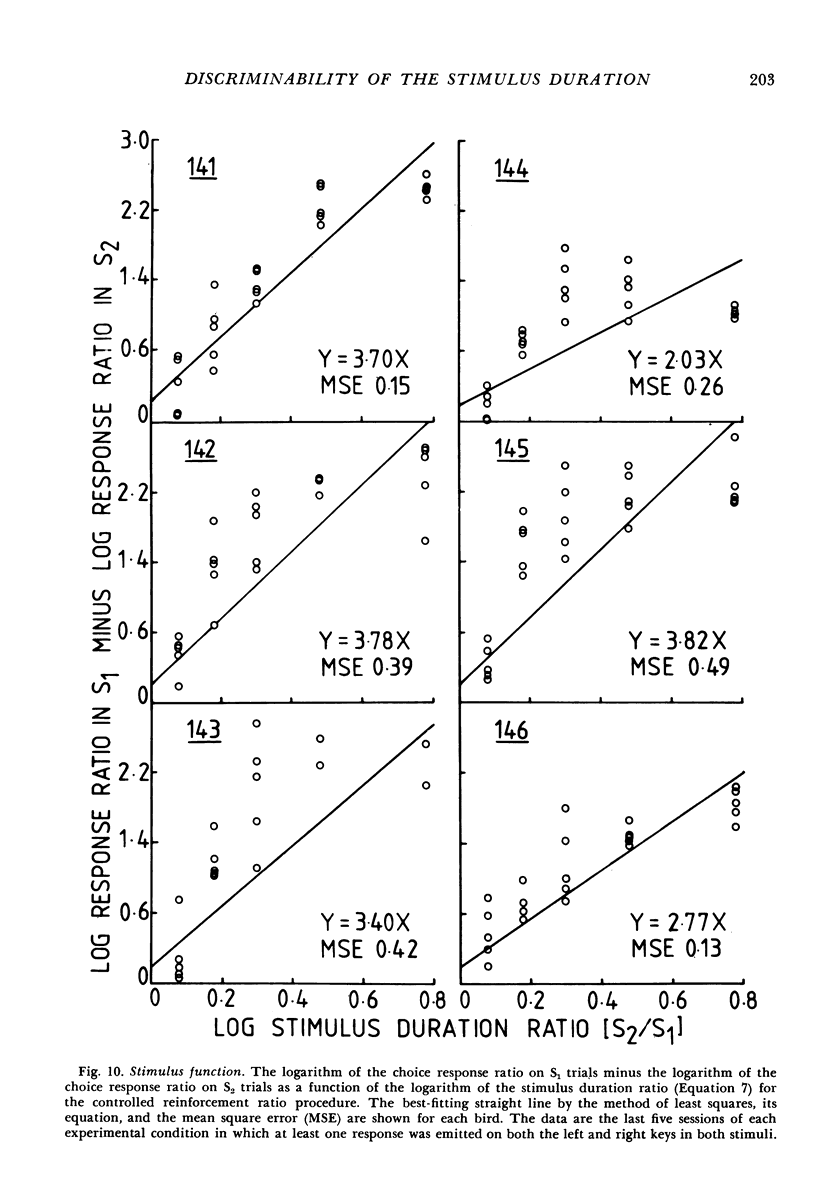
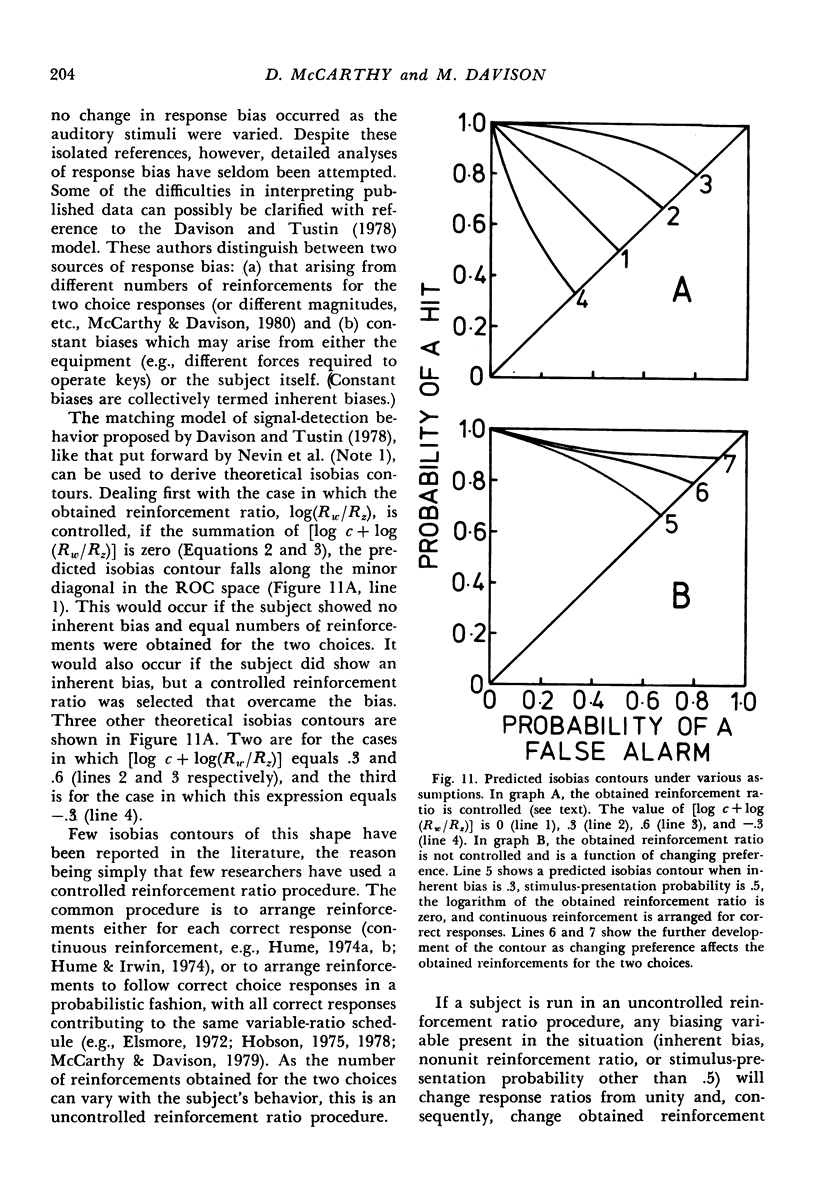
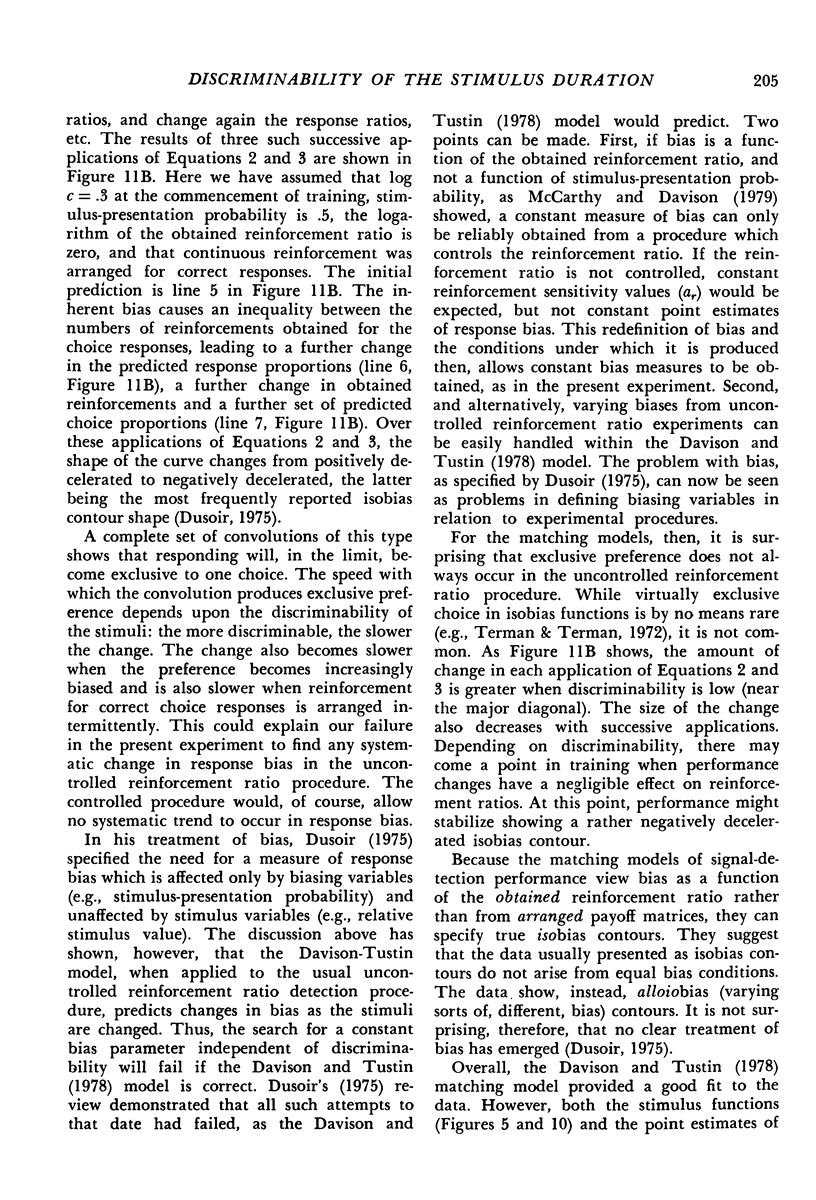
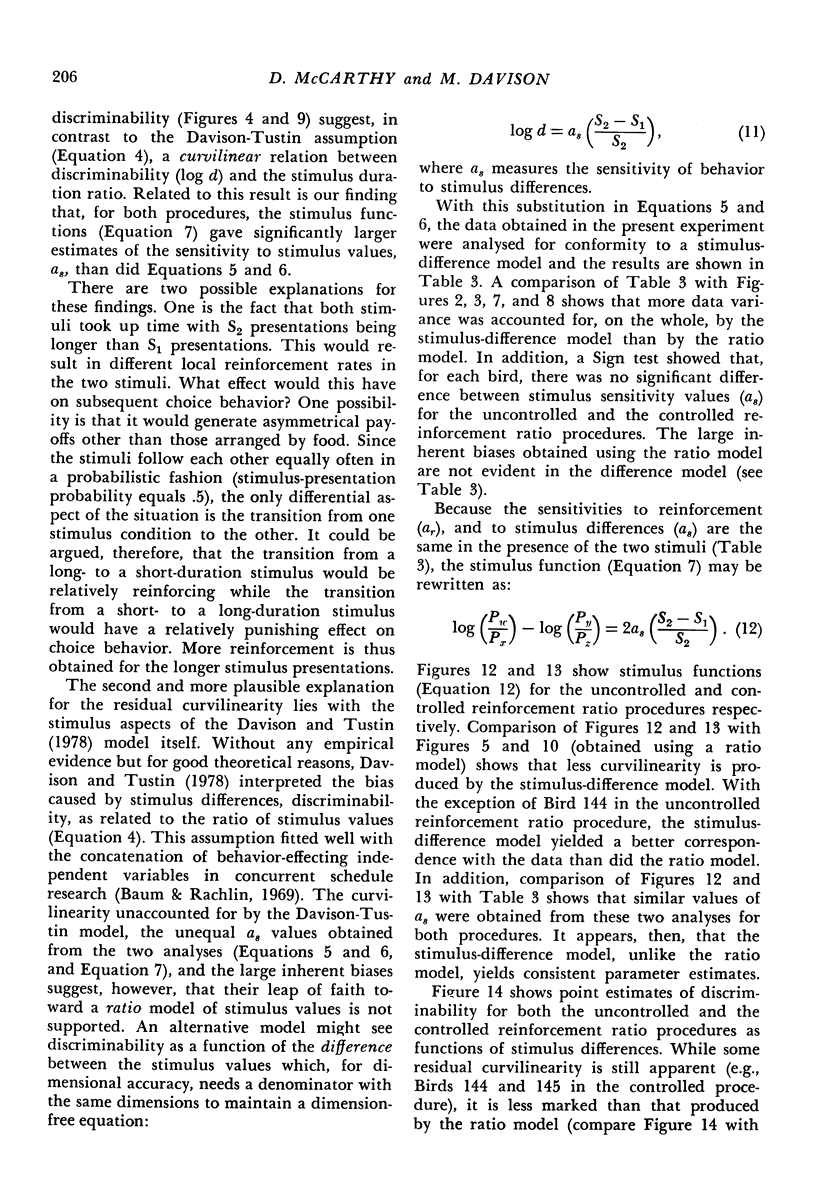
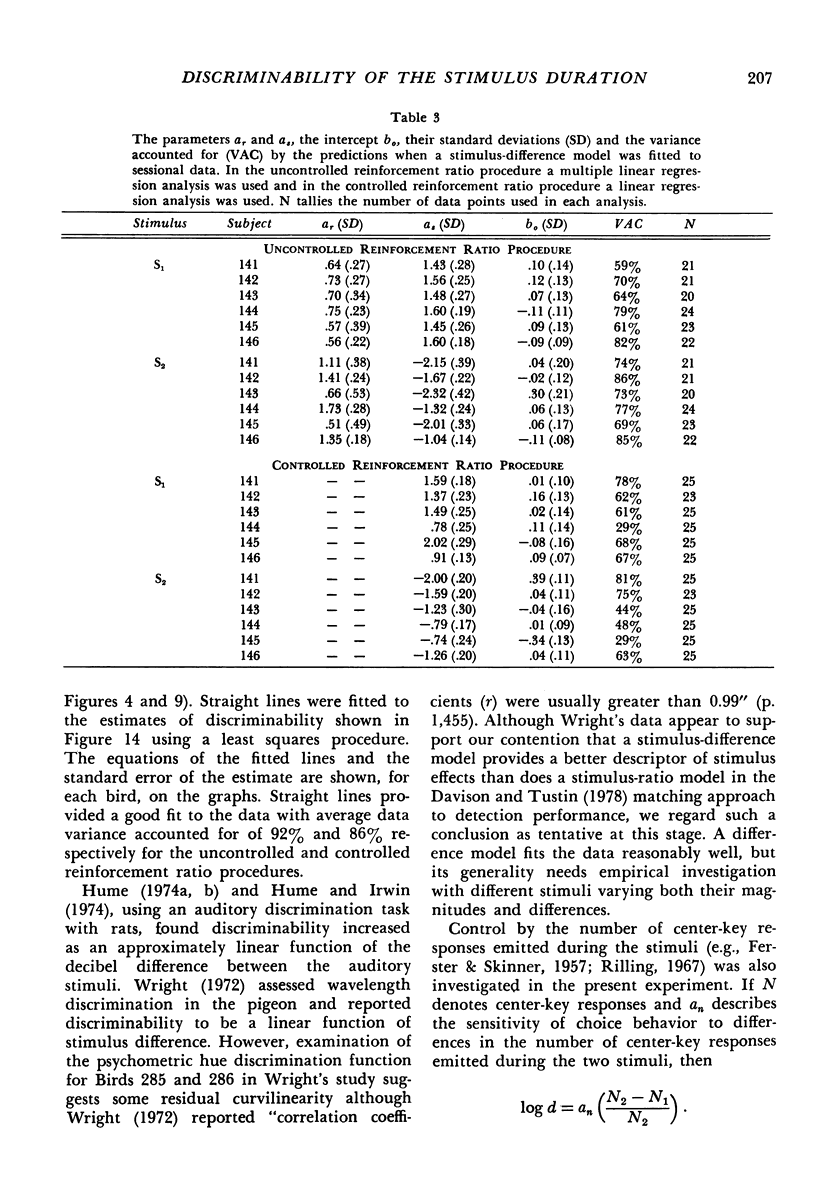
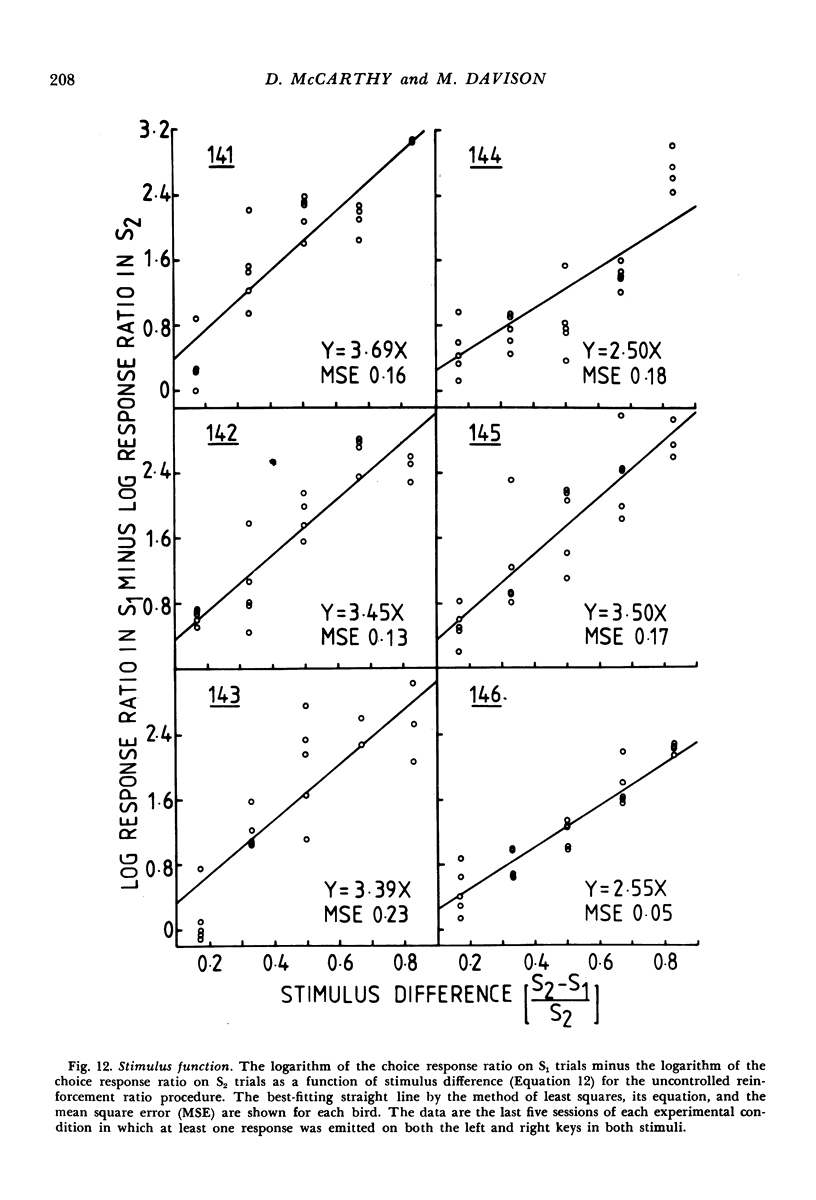
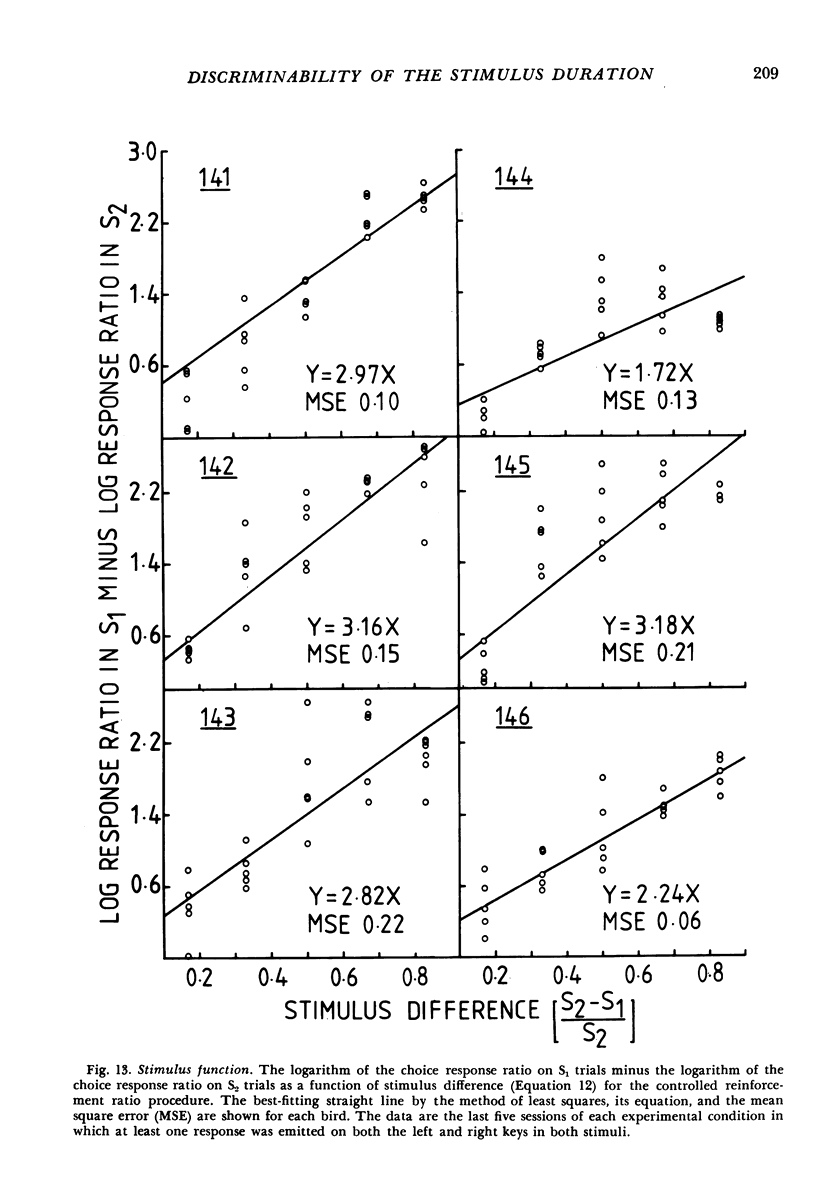
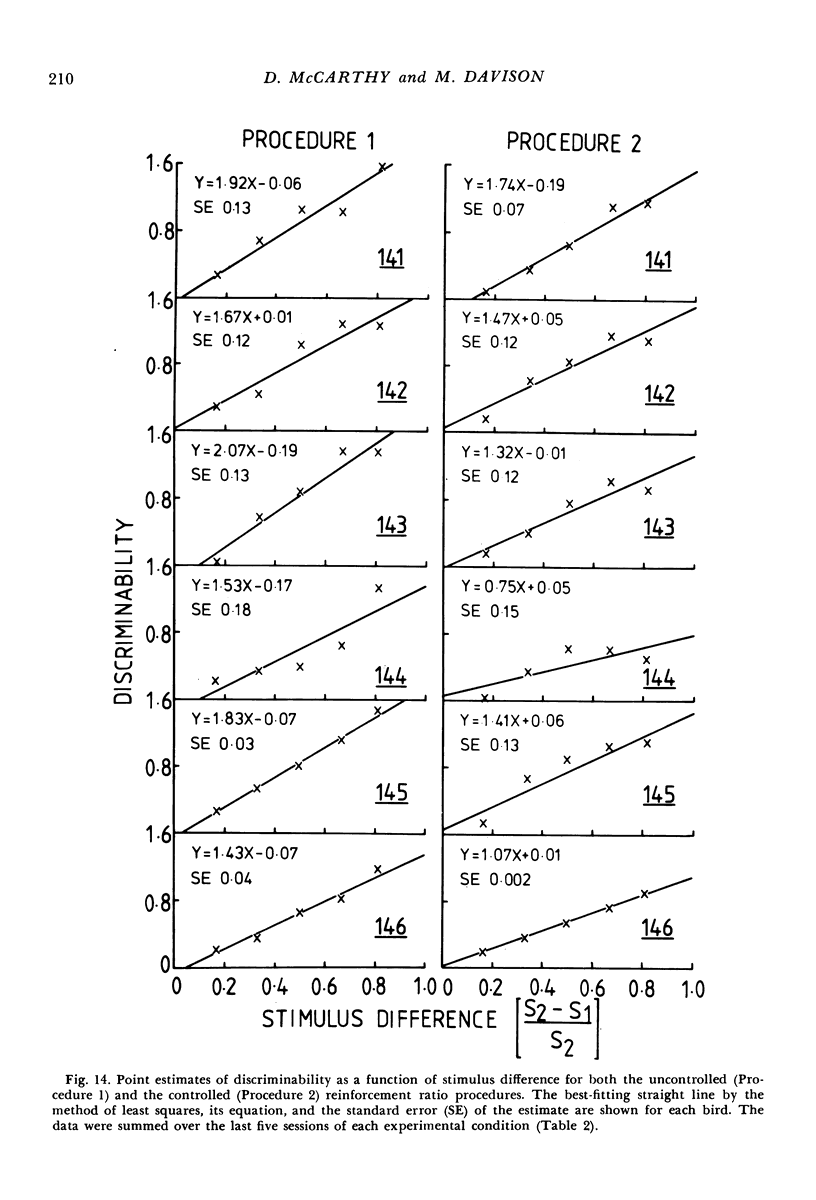
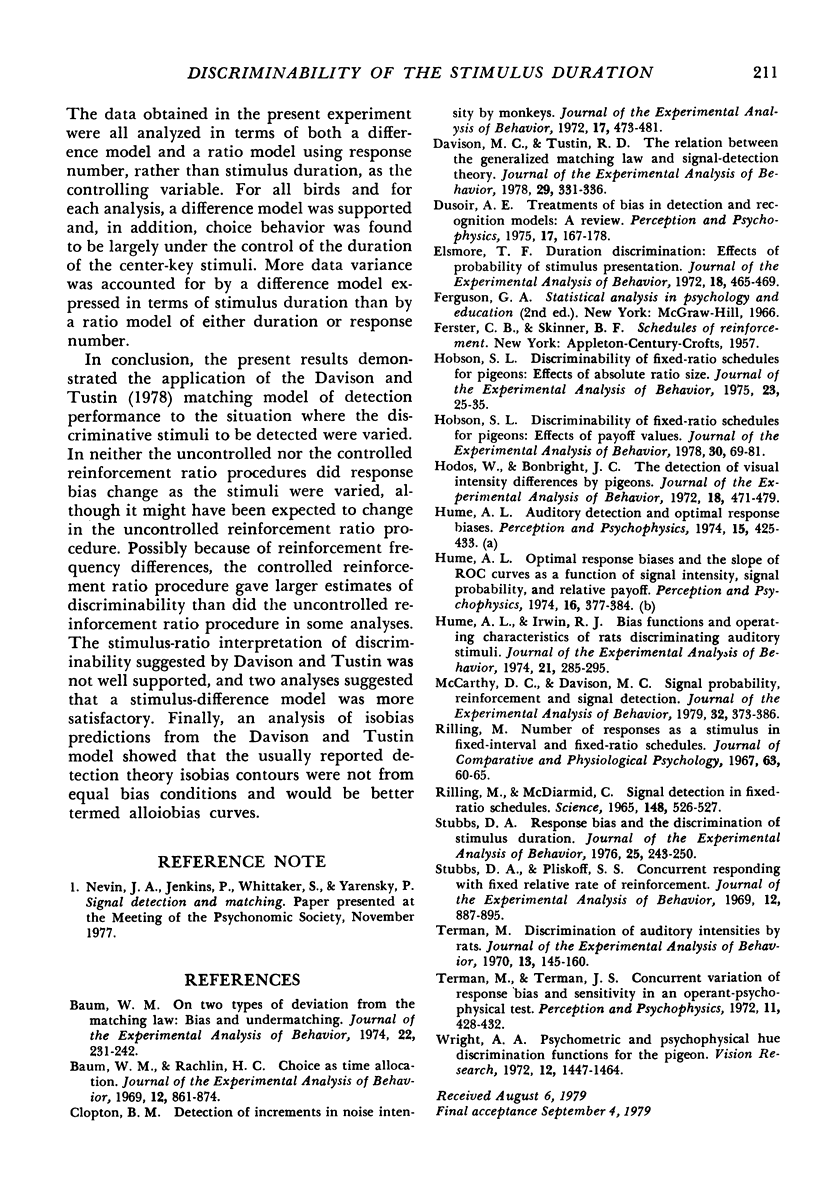
Selected References
These references are in PubMed. This may not be the complete list of references from this article.
- Baum W. M. On two types of deviation from the matching law: bias and undermatching. J Exp Anal Behav. 1974 Jul;22(1):231–242. doi: 10.1901/jeab.1974.22-231. [DOI] [PMC free article] [PubMed] [Google Scholar]
- Baum W. M., Rachlin H. C. Choice as time allocation. J Exp Anal Behav. 1969 Nov;12(6):861–874. doi: 10.1901/jeab.1969.12-861. [DOI] [PMC free article] [PubMed] [Google Scholar]
- Clopton B. M. Detection of increments in noise intensity by monkeys. J Exp Anal Behav. 1972 May;17(3):473–481. doi: 10.1901/jeab.1972.17-473. [DOI] [PMC free article] [PubMed] [Google Scholar]
- Davison M. C., Tustin R. D. The relation between the generalized matching law and signal-detection theory. J Exp Anal Behav. 1978 Mar;29(2):331–336. doi: 10.1901/jeab.1978.29-331. [DOI] [PMC free article] [PubMed] [Google Scholar]
- Elsmore T. F. Duration discrimination: effects of probability of stimulus presentation. J Exp Anal Behav. 1972 Nov;18(3):465–469. doi: 10.1901/jeab.1972.18-465. [DOI] [PMC free article] [PubMed] [Google Scholar]
- Hobson S. L. Discriminability of fixed-ratio schedules for pigeons: effects of absolute ratio size. J Exp Anal Behav. 1975 Jan;23(1):25–35. doi: 10.1901/jeab.1975.23-25. [DOI] [PMC free article] [PubMed] [Google Scholar]
- Hobson S. L. Discriminability of fixed-ratio schedules for pigeons: effects of payoff values. J Exp Anal Behav. 1978 Jul;30(1):69–81. doi: 10.1901/jeab.1978.30-69. [DOI] [PMC free article] [PubMed] [Google Scholar]
- Hodos W., Bonbright J. C., Jr The detection of visual intensity differences by pigeons. J Exp Anal Behav. 1972 Nov;18(3):471–479. doi: 10.1901/jeab.1972.18-471. [DOI] [PMC free article] [PubMed] [Google Scholar]
- Hume A. L., Irwin R. J. Bias functions and operating characteristics of rats discriminating auditory stimuli. J Exp Anal Behav. 1974 Mar;21(2):285–295. doi: 10.1901/jeab.1974.21-285. [DOI] [PMC free article] [PubMed] [Google Scholar]
- McCarthy D., Davison M. Signal probability, reinforcement and signal detection. J Exp Anal Behav. 1979 Nov;32(3):373–386. doi: 10.1901/jeab.1979.32-373. [DOI] [PMC free article] [PubMed] [Google Scholar]
- RILLING M., MCDIARMID C. SIGNAL DETECTION IN FIXED-RATIO SCHEDULES. Science. 1965 Apr 23;148(3669):526–527. doi: 10.1126/science.148.3669.526. [DOI] [PubMed] [Google Scholar]
- Rilling M. Number of responses as a stimulus in fixed interval and fixed ratio schedules. J Comp Physiol Psychol. 1967 Feb;63(1):60–65. doi: 10.1037/h0024164. [DOI] [PubMed] [Google Scholar]
- Stubbs D. A., Pliskoff S. S. Concurrent responding with fixed relative rate of reinforcement. J Exp Anal Behav. 1969 Nov;12(6):887–895. doi: 10.1901/jeab.1969.12-887. [DOI] [PMC free article] [PubMed] [Google Scholar]
- Stubbs D. A. Response bias and the discrimination of stimulus duration. J Exp Anal Behav. 1976 Mar;25(2):243–250. doi: 10.1901/jeab.1976.25-243. [DOI] [PMC free article] [PubMed] [Google Scholar]
- Terman M. Discrimination of auditory intensities by rats. J Exp Anal Behav. 1970 Mar;13(2):145–160. doi: 10.1901/jeab.1970.13-145. [DOI] [PMC free article] [PubMed] [Google Scholar]
- Wright A. A. Psychometric and psychophysical hue discrimination functions for the pigeon. Vision Res. 1972 Sep;12(9):1447–1464. doi: 10.1016/0042-6989(72)90171-x. [DOI] [PubMed] [Google Scholar]


